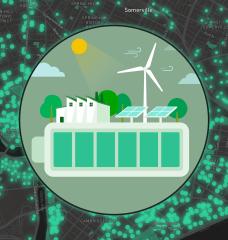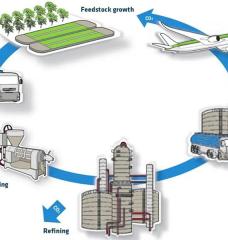
How can sustainability reduce costs, or increase the value of a business or product?
Bella Tonkonogy is a Climate Finance Manager at the Climate Policy Initiative. Describing her work as “effectively, and quickly, re-orienting flows of capital towards the pressing needs of sustainable development”, Tokonogy chats with MIT Climate about sustainability in the business sector. If you're interested in what Bella does, check out the Climate Policy Initiative.
Mikaela: Tell us a little bit about you and your background.
Bella: I graduated undergrad (from UC Berkeley) with a biology degree, but in my last year especially had been drawn more and more towards policy. So I ended up getting a Master’s in environmental economics and started working at the U.S. Environmental Protection Agency, in 2005, with a public-private partnership called Climate Leaders (we were in the same division as the widely known Energy STAR program). The idea was to help companies figure out how to measure their emissions, and give them the tools to manage them, by incentivizing them to set aggressive public emissions reduction targets and helping them identify how to get there. I learned about nearly every industry in the country and how they use energy – it was fascinating. While today these steps seem obvious to many companies, in 2005 these were the first companies doing this, with the first corporate greenhouse gas emissions accounting methodologies ever published.
When Obama was elected, I moved into a policy role; we worked with congressional staff to analyze proposed climate change legislation. My job was to understand how legislation would affect different industries in the US. It was an exciting time as we provided significant analytical input into the Waxman-Markey bill, which passed the House and is still (lamentably) the only comprehensive climate change legislation passed by one of the chambers of Congress. While in that role I also started working with colleagues in other countries who were having similar debates, to share our analytical methods and learn from theirs. That got me interested in working internationally, which I’ve been doing ever since – first at U.S. Treasury where I worked for the Office of Environment and Energy (started by Hank Paulson, a Republican), and now at Climate Policy Initiative. In both roles I am focused on how public finance and policy can most effectively catalyze low carbon, climate resilient economic development. In between the two positions I spent a year at MIT Sloan as a Sloan Fellow, building up my finance skills and connecting with MIT’s amazing energy innovation ecosystem, and two years as an independent consultant based in Paris, France.
Mikaela: How would you describe Climate Policy Initiative’s mission?
Bella: With deep expertise in policy and finance, Climate Policy Initiative works to improve the most important energy and land use practices around the world. Our mission is to help governments, businesses, and financial institutions drive growth while addressing climate risk.
We have offices in 5 countries and work with both developed and developing countries. One of the key points of our mission is that we want to drive solutions that support development as well as address climate change. We work in three areas: Understanding investors and investment trends; ensuring effective use of public and private resources; and developing and scaling transformative solutions. On the third, we run an initiative called the Lab, which supports the development and launch of transformative sustainable finance ideas. Since its start in 2014, the Lab has launched 25 finance instruments that have mobilized nearly USD $1 billion in sustainable investment to date.
Mikaela: How can “going green” be not only an ethical move for businesses, but also a pragmatic and/or lucrative one?
Bella: There are many, many answers to this question, as it depends on your industry and the geographies where you’re operating. Being “green” will look different for a clothing apparel company like Patagonia, that has to work with an extensive supply chain to find resource efficiency opportunities and produce clothing from sustainable materials, than for a company like Google that needs significant amounts of energy to run its data centers and process all our Google searches. Both companies have made significant commitments to sustainability that are relevant to their business. Google announced that for 2017 it reached 100% renewable energy for its global operations. And as renewable energy costs continue to decrease I expect to see more and more companies in this category.
Mikaela: You’ve worked both domestically and internationally on implementing low-carbon, sustainable practices for businesses. Have you faced any obstacles abroad in implementing these practices that you didn’t have to in the United States? Or vice-versa?
Bella: There are obstacles everywhere, of course, as climate change touches on most of the economy. In the US the major obstacle has been at the federal policy level, but at the same time many states and businesses have showed that we can make a lot of progress in the absence of national-level policy.
MIkaela: What advice would you give to a business owner looking to transition into using low-carbon, sustainable practices?
Bella: I think the best thing to do is to get involved in a partnership so you can learn from the best practices of others. There are many credible partnerships around, including The Lab that we manage, but also NGOs like EDF, Ceres, and others that have long run really successful partnerships to help companies navigate the many opportunities and challenges of pursuing sustainability.
The other thing is to make sure you translate the sustainability benefits into the language of business – how does sustainability reduce costs or increase the value of a business or product?
If you had a magic wand and could change one thing regarding the policies or practices that lead to global warming, what would you change?
The phrase “money talks” immediately leaps to mind. I would love to see every investor globally align their capital with low carbon pathways.






